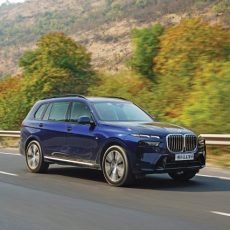The all-new, all-electric Porsche Taycan has finally been officially unveiled, in Turbo and Turbo S guises no less, at simultaneous launch events around the world.

Porsche Taycan Turbo and Turbo S. Photography: Christoph Bauer, Post-production: Wagnerchic
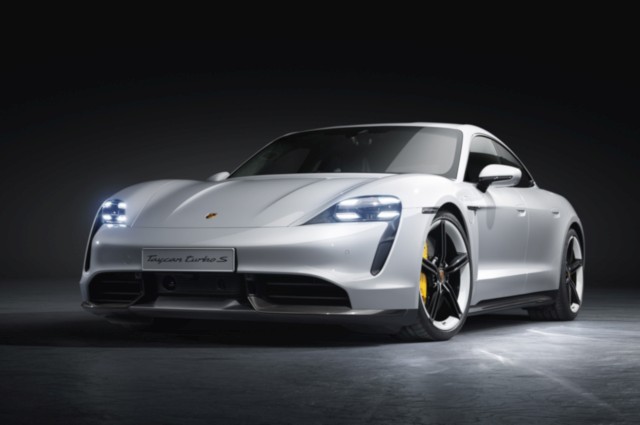
The Porsche Taycan gets its name from “Tay” and “can” which, roughly translated, mean “soul of a spirited young horse”. The T nomenclature signifies a new model line and “can”, meaning “soul”, is relevant to the new line’s theme of “Soul, electrified”, while retains its consistent connection with Porsche model lines. The new four-door sportback body style makes it reminiscent of a Panamera, but it is 86 millimetres shorter than the standard specification Panamera model.
The Porsche Taycan has been under development and testing for a while now and, while we sort of knew what to expect, Porsche have managed to pleasantly surprise us even so. The new Porsche Taycan has only arrived in two iterations: Turbo and Turbo S. No, none of them have any turbos or even a combustion engine. What’s under those Mission-E based lines is an 800-volt electrical system, a 93.4-kWh battery pack low down in the floor, two electric motors – one on the front axle and one on the rear axle – for four-wheel drive, including two separate transmission units – the rear packing a two-speed unit for low and high ratios. The Taycan Turbo duo measure 4,963 millimetres long and run a wheelbase measuring 2,900 mm. Since there is no engine, there are two luggage compartments, with the front compartment offering 81 litres of storage while the boot offers 366 litres. The Taycan gets three-chamber air suspension.
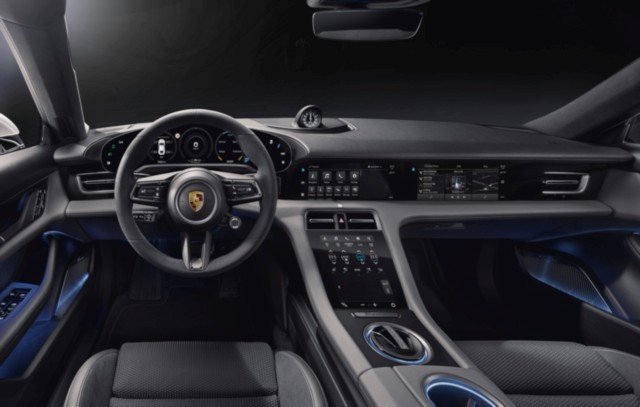
Inside, the Taycan looks even more technologically up-to-date than any other Porsche; and rightfully so. The driver information console is one seamless curved display. The range indicator even has a little icon that looks like a fuel pump symbol, only it’s a charge point and a plug. The centre console has one screen atop for various car functions, and another one below for climate, audio and other settings. The front passenger also gets a screen on the dashboard further aside, with phone, maps, navigation, and audio information. While the elements may have evolved, the essential details are right where they should be. The driving modes offered are Range, Normal, Sport, Sport Plus and Individual.
The powertrain for the Porsche Taycan Turbo and Turbo S, as mentioned above, consists of two electric motors that incorporate the control electronics as well, two transmission units, a large battery pack and the provision for an Overboost function. This is where things get even more interesting. The permanent-excited magnet synchronous motors are powered by modules with high power density. The “hairpin” winding of the stator coils means more copper is incorporated, improving its output characteristics. The Taycan Turbo provides an output of 460 kW or 625 hp. The peak output is 500 kW or 680 hp, accompanied by 850 Nm of peak twist – matching the output of the Panamera Turbo S E-Hybrid. Even with its 2,305-kg mass, it can hit 100 km/h from standstill in 3.2 seconds and get up to 260 km/h. The certified range on the WLTP (Worldwide-harmonized Light-vehicle Test Procedure) is between 381 and 450 km on one charge.
The Taycan Turbo S gets the same 460-kW sustained output and 260-km/h top speed, but can produce a peak 560 kW or 761 hp with Overboost, while also being 10 kg less in weight. This allows for an even quicker 0-100-km/h time of 2.8 seconds.
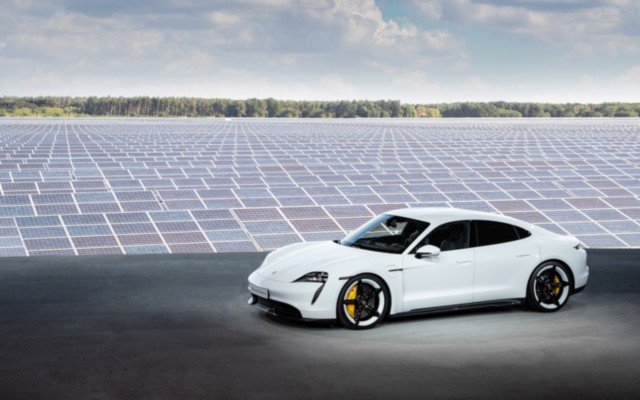
Both the cars produce zero emissions at the wheel. What you use to charge it up though, is a different matter altogether. Speaking of which, the Porsche Taycan duo can recharge at up to 270 kW of maximum charging power, with recuperation potential pegged at 265 kW as well. In fact, Porsche say that 90 per cent of everyday braking manoeuvres are performed by the electrikmaschines themselves without engaging the actual brakes.
The Porsche Taycan Turbo has been priced at US $150,900 (Rs 1.05 crore approx) while the more potent Taycan Turbo S costs US $185,000 (Rs 1.3 crore approx). The Taycan is earmarked for an Indian introduction, which may be by the end of this year or, as we expect, early next year. More affordable and lower powered models will follow, of course. Watch this space.
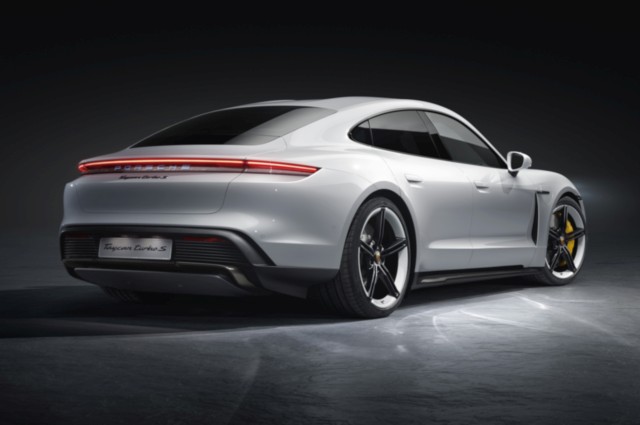
Here’s a spec comparison for all Porsche Turbo S models (we knew you’d want one!)
|
911 Turbo S Exclusive |
Panamera Turbo S E-Hybrid |
Taycan Turbo S |
|
|
Engine |
3.8-litre biturbo flat-six petrol |
4.0-litre biturbo V8 petrol + E-motor |
Two E-motors |
|
Max Power |
607 hp |
680 hp |
761 hp |
|
Max Torque |
750 Nm |
850 Nm |
1,050 Nm |
|
Weight |
1,600 kg |
2,310 kg |
2,295 kg |
|
0-100 km/h |
2.9 seconds |
3.4 seconds |
2.8 seconds |



